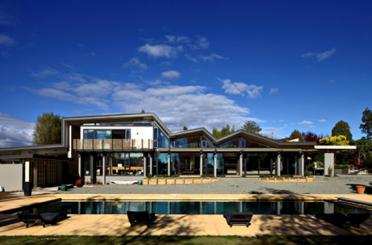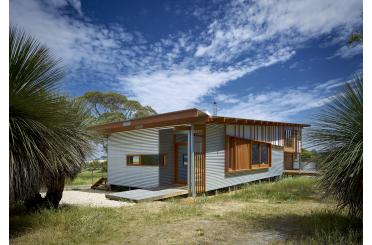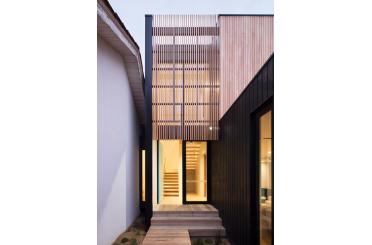Greater Western Sydney
Greater Western Sydney NSW 2753
Australia
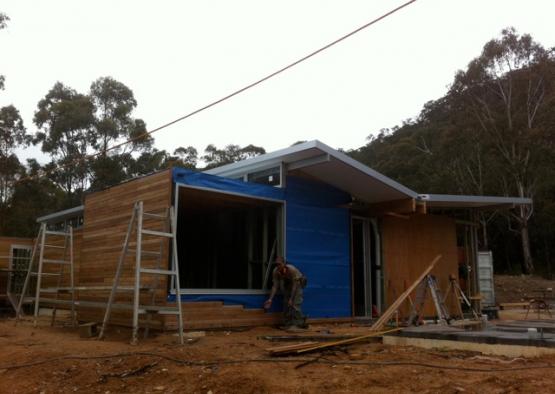
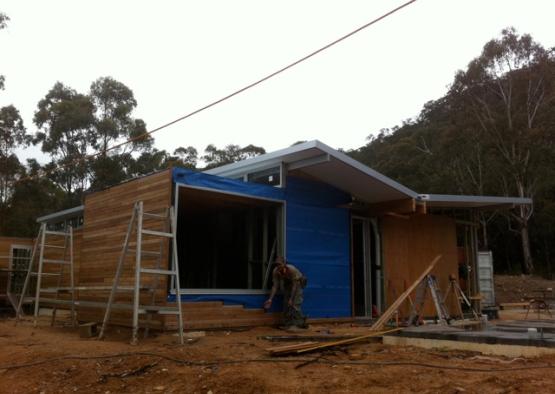
Overview
The Little Hartley house utilises timber structurally, in cladding and as feature veneer cladding internally. It showcases the natural aesthetic qualities of timber in the external cladding as well as its inherent strength in resisting the elements. Internally the use of timber veneer provides a cohesive transition from the external in addition to the creation of a welcoming environment.
Little Hartley was constructed using a timber frame methodology. This method reduced transport impact as the materials were available locally and the repetitive nature of the panels allowed them to be prefabricated before being lifted into place.
Urban Possible architects used Blackbutt throughout the construction of the Little Hartley House because of its high quality, easy regeneration and quick growth properties. It is naturally bushfire resisting and termite resistant which allows it to be easily utilise in this high-risk bushfire zone and reduces the need for chemical barriers to termites.
-33.6149421, 150.6981989
Structure
A systematic approach to sustainability was used in the design and construction of entry no.58 Little Hartley and the overall sustainable outcome was generated through a number of design and construction decisions.
By utilising a double skin Blackbutt clad wall to the west, the wall can breathe, improving the U value of the overall wall system and reducing solar gain.
The use of both full height and high level glazing coupled with the shape of the roof, the placement of windows and fan drives natural ventilation throughout the house.
Double glazing was used throughout to reduce the need for heating and cooling and to improve thermal comfort.
A 20,000 litre rainwater tank collects water from the butterfly roof and is pumped back to the house.
The insulated concrete slab is used as the floor surface throughout. The slab operates as a heat sink during winter and a cooling surface during summer.
Minimal landscaping in deference to the bush setting and the use of recycled Blackbutt cladding also contributed to sustainability.
Exterior
The surrounding bushland made timber cladding an appropriate choice. The cladding allows the building to recede from view and the focus to be directed onto the beauty of the landscape. The integral material properties of Blackbutt cladding also influenced the choice of this type of timber cladding as the site is located within a high-risk bushfire zone.
The entire western wall is clad in recycled Blackbutt cladding. The application of this cladding allows the house to blend into its bushland setting, reduces its visual impact in a sensitive setting and enables the landscape to shine. In addition, the construction of the double skin timber wall to the west improves the thermal efficiency of the home.
No chemical treatment or staining was applied to the timber cladding, instead the timber will weather naturally and turn colour in parallel with the coreten cladding, allowing the buildings appearance to change and evolve over time.
Interior
For cost control purposes the insulated prefabricated roofing system is exposed internally, no ceiling was used and minimal lights could then be accommodated within the roofing system. Instead, the glulam beam which supports the box gutter spanning across the house is encased in Blackbutt veneered plywood and warm light fluorescents are recessed providing the main light running through the house. This method of lighting allows the prefabricated insulated roof panels to be exposed internally as no ceiling is used.
The internal rainwater pipes, which feed from the box gutter, are also encased with Blackbutt veneered plywood with warm light fluorescents recessed into their form, providing vertical lighting. All joinery in bedrooms, bathrooms and kitchens are also manufactured out of Blackbutt veneered plywood.

